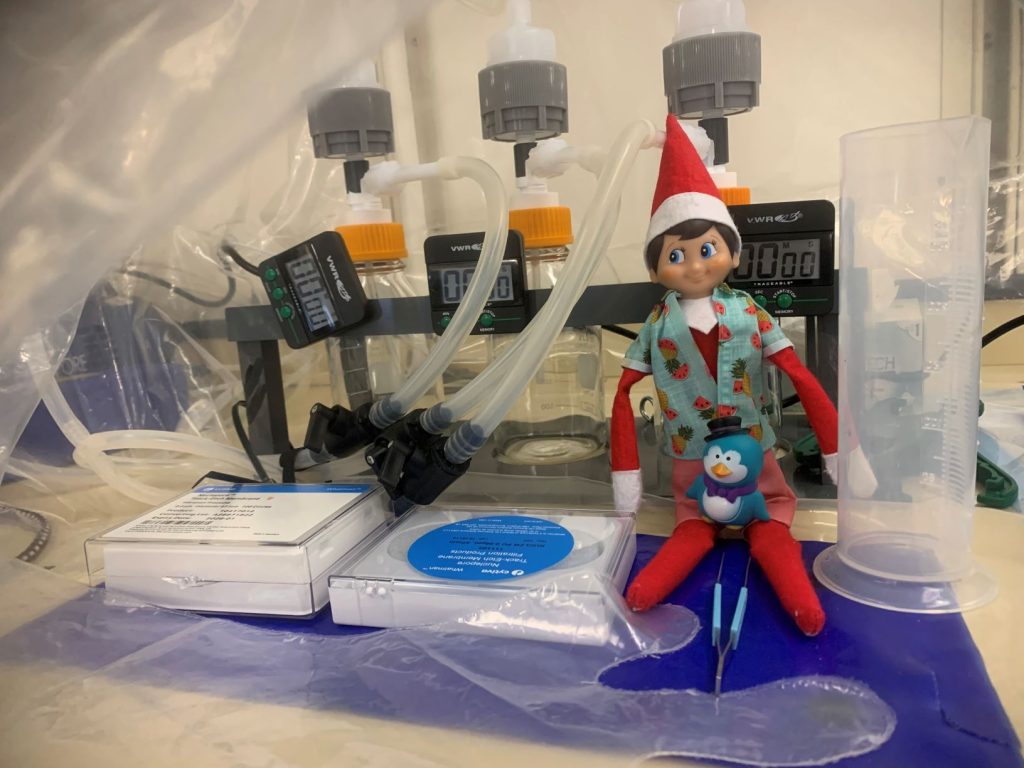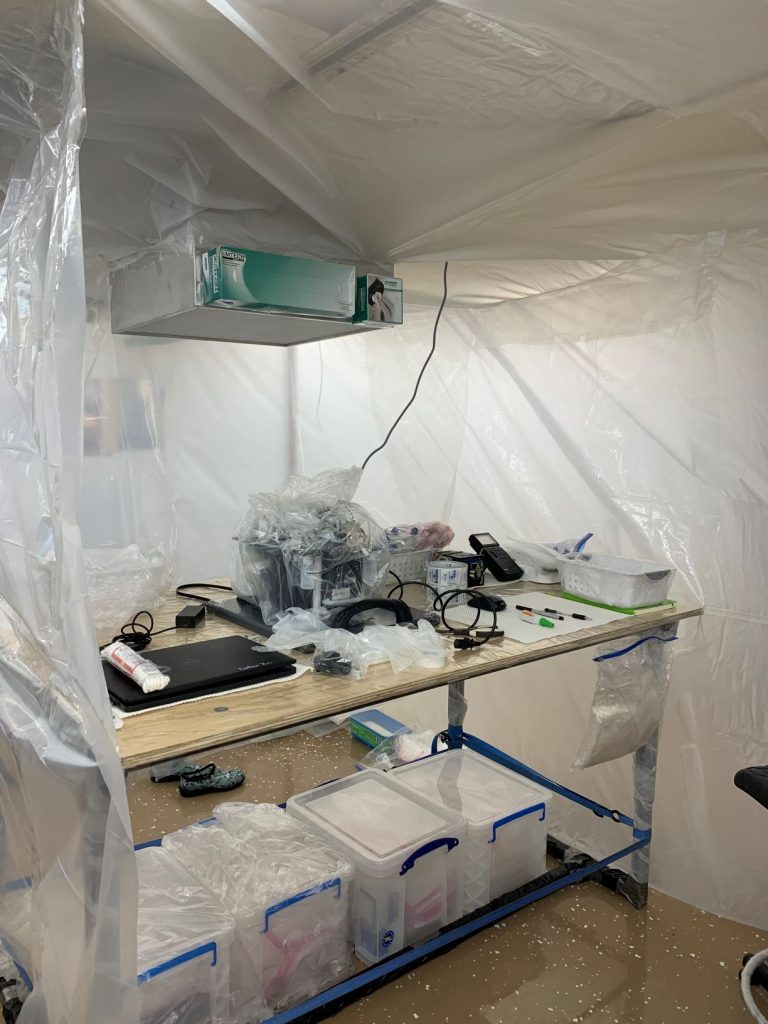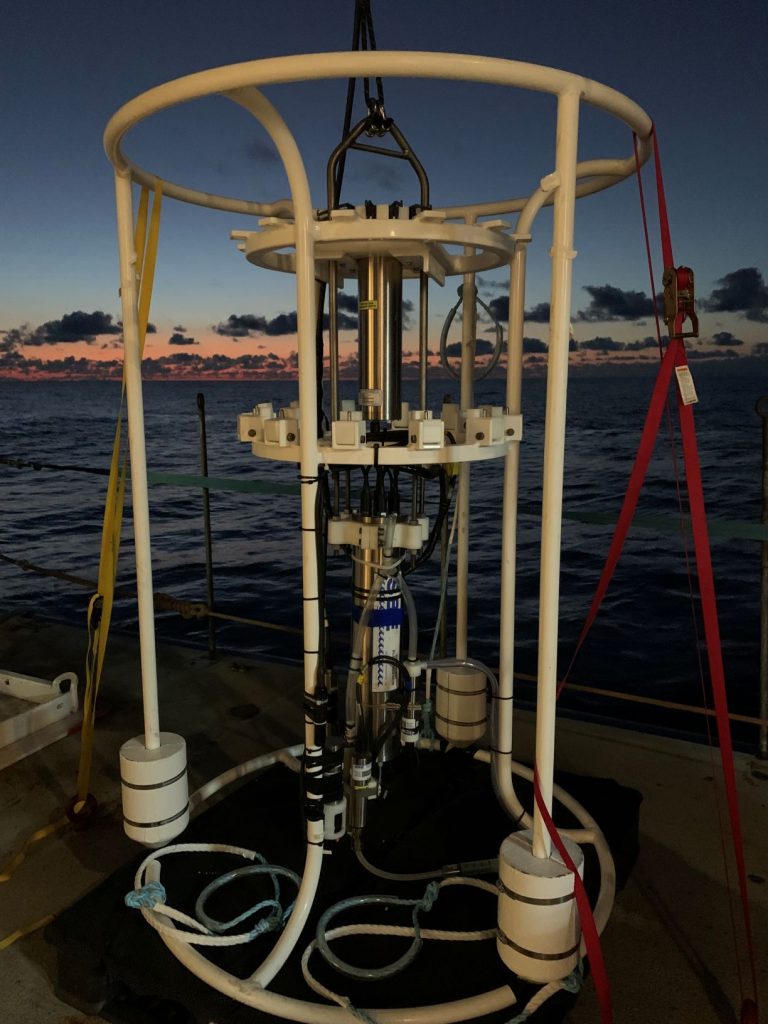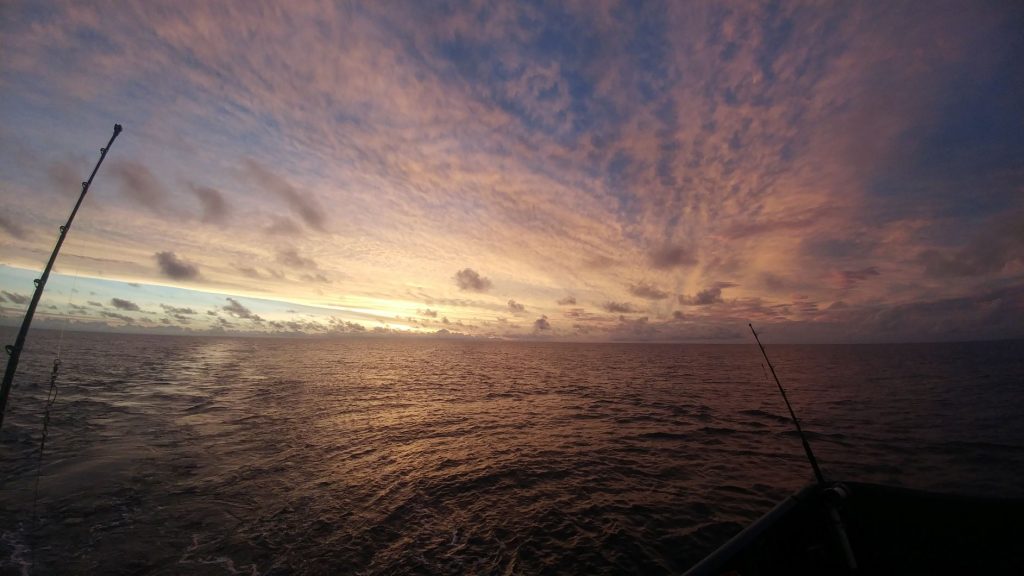Cutter Lab



Cutter has 1000 ft2 of laboratory space under his direct control in the Oceanography /Physics Building These labs include a Class 100 clean room and associated equipment (e.g., quartz sub-boiling still, laminar flow benches) for trace metal work. Laboratory/field instrumentation includes: two Hewlett-Packard 5890 Gas Chromatographs with flame photometric detectors for ultra trace hydrogen sulfide and carbonyl sulfide determinations; four HNU Gas Chromatographs with photoionization detector for determinations of arsenic and antimony speciation, two Buck 210VGP Atomic Absorption Spectrometers equipped for determinations of Se speciation by selective hydride generation; PS Analytical Atomic Fluorescence Mercury Analyzer with autosampler; Perkin Elmer 5300 DV Inductively Coupled Plasma – Optical Emission Spectrometer with autosampler; HNU photoionization detector dedicated to the analysis of mackinawite, greigite, and pyrite in sediments via the selective production of hydrogen sulfide; Dionex DX-100 Ion Chromatograph; BASi EC Epsilon Potentiostat with hanging mercury drop electrode; Elementar Vario Micro Cube CNS elemental analyzer; Global FIA miniSIA-2 with fluorescence cell for sub-nM Zn determinations; UIC CM5014 Total Inorganic Carbon coulometer with autosampler; Astoria Pacific 5-channel Rapid Flow Analyzer for automated nutrient determinations at micromolar to nanomolar concentrations using liquid core waveguides; and a CEM MARS microwave-assisted acid digestion system. Field equipment includes (3) 30 L and (9) 5 L Go Flo bottles for trace metal-clean (and trace sulfur gas) water collection, 5600 m, 6 mm Kevlar hydrographic cable and plastic messengers, a Soutar soft-sediment box corer, and a towed, underway sampling “fish” with Teflon tubing and peristaltic pumps for obtaining clean surface seawater.
The US GEOTRACES Trace Element Sampling Facility that Cutter oversees is composed of: Seabird trace metal-clean carousel (polyurethane powder-coated aluminum frame with titanium pressure housings for the pylon, central processor, and all sensors) with transmissometer, fluorometer, and SBE 43 Oxygen probe, and holding 24 12 L GO-Flos with the capability of firing up to 3 bottles simultaneously; Dynacon traction winch with line monitoring, slip rings, and 7800 m of 2022 Rochester Vectran conducting cable; Allied Systems portable hydraulic A-frame; 20’ positive pressure (HEPA), clean lab van (holds 24 GO Flos for active sampling and 14 in storage; HEPA laminar flow bench; Milli Q water system); (48) 12 L GO-Flo bottles with Teflon coating and modified for direct pressure filtration; and a 35’ collapsible aluminum boom for towing a clean sampling fish during transits. The lab van is fully UNOLS-compliant and can be shipped as a standard container, the winch, carousel, and sampling boom are all held on a 20’ flat rack container for shipping, and the A-frame is stored and shipped on its own 20’ flat rack container.
The Department of Ocean, and Earth Sciences has machine and electronics shops in the Marine Support Facility that can be utilized by investigators and also has staff who provide technical support. The GEOTRACES Facility is housed in the Marine Support Facility and is maintained/operated by head marine technician Chris Powell. The newest instrument facility in the Department is a Thermo Scientific Element-XR high resolution
inductively-coupled plasma mass spectrometer and an in-line Elemental Scientific SeaFAST SP3 sample introduction system, include hydride generation system. This analytical system, funded by a NSF-MRI award with Peter Sedwick as the lead PI (Cutter is one of the co-PIs), was installed at Old Dominion University’s College of Sciences Major Instrumentation Cluster (COSMIC) in June 2016. The Department has a coastal research vessel, the 55′ aluminum R/V Fay Slover, capable of speeds to 22 kts, while still having a large lab, A-frame, and hydrographic winch with conducting cable for its CTD/rosette sampling system. In addition, the Department maintains 4 small outboard boats (16-24’) for near-shore and lake sampling. Old Dominion University is an associate member of UNOLS (University National Oceanographic Laboratory System), and of the University Corporation for Atmospheric Research (UCAR) and its Center for Ocean Leadership.


